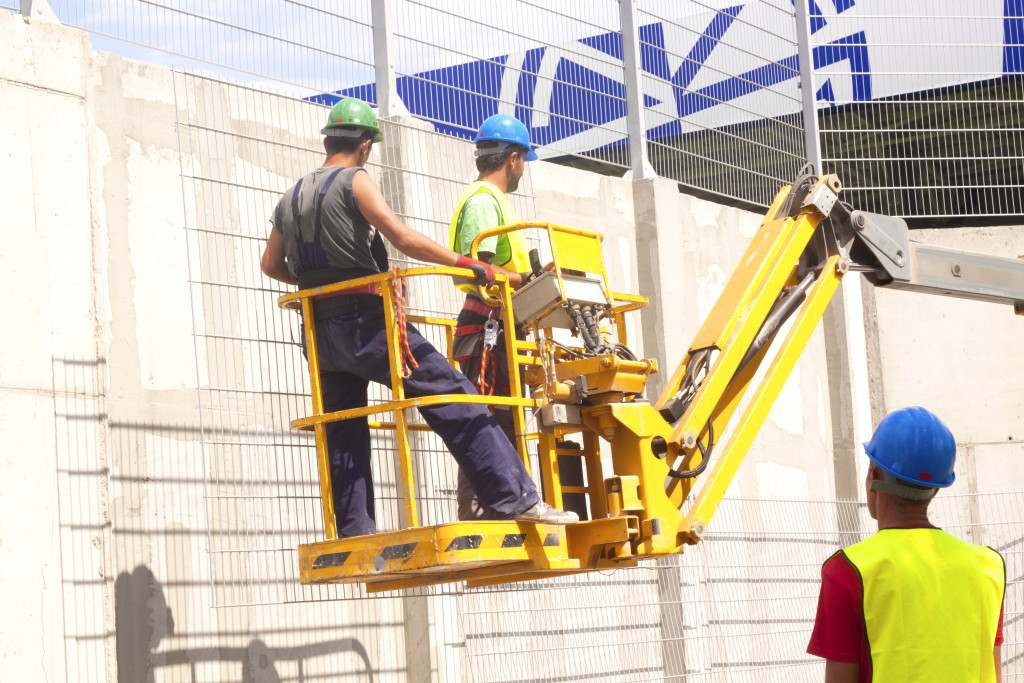- Employers must diligently verify their employees’ identity and work authorization documents to guarantee full legal compliance.
- Providing workers with relevant safety training and verifying their completion is paramount.
- Background checks are essential in ensuring potential employees have a clean criminal record.
- Agreement on roles, responsibilities, rights, and duties is mandatory for workers on the project.
Employers must ensure they are eligible before construction workers can work on a site. By taking these steps, employers can be sure that only qualified individuals will work on their projects safely and securely. Furthermore, this process helps protect employees and employers from potential legal issues or liabilities.
Know your workers’ credentials.
Knowing your workers’ credentials is one of the most important steps employers can take to ensure their project is completed safely and legally. Here are some tips on what you can do:
Verify each worker’s identity.

Verifying each worker’s identity and work authorization documents is essential for employers to ensure their workforce is legally authorized. This process involves examining documents such as a driver’s license or passport to confirm their authenticity and eligibility.
Failure to verify a worker’s identity and work authorization could result in significant legal and financial consequences for the employer, including hefty fines and potential criminal charges. Therefore, employers must take this step seriously and carefully review each worker’s documents to ensure compliance with federal regulations. By doing so, employers can protect themselves and their employees from complications from working with unauthorized workers.
Confirm relevant safety training.
Confirming that each worker has received relevant safety training is crucial to ensuring a safe and productive construction site. It is the responsibility of employers to provide adequate training to their workers. Still, it is equally important to have a system to confirm that the training has been received and understood.
One option is to require workers to take a CITB Health, Safety, and Environment test, which assesses their knowledge of basic health and safety practices in construction. This not only confirms that workers have received proper training, but also helps to reinforce important safety concepts. Other options may include:
- Conducting frequent safety audits and inspections.
- Providing ongoing training opportunities.
- Regularly communicating with workers about the importance of following safety protocols.
Check up-to-date certifications and licenses.
One of the most important steps in ensuring a safe and efficient construction site is checking that all workers have up-to-date certifications and licenses necessary for the job. This process involves verifying that workers have completed the required education and training for their role and ensuring that their licenses have not expired.
Properly checking these certifications and licenses ensures that workers are legally allowed to work on-site and possess the necessary skills to perform their job safely and effectively. This step is crucial in preventing accidents and injuries, protecting the employer from liability, and ensuring the work is completed to a high standard. Failing to carry out this process could result in legal action and potentially harm the workers, the public, and the project’s success.
Ensure that any necessary skills tests are completed.

In construction, ensuring that any necessary skills tests are completed successfully is an essential factor in maintaining a safe working environment. This process verifies the extent of knowledge and skills that an individual possesses within their field of work, and how they can apply their expertise to the job site. It is critical to have employees that meet certain criteria to ensure that only skilled and knowledgeable individuals are on the construction site.
This method prevents untrained personnel from making costly mistakes or placing others in danger. Therefore, by verifying that all necessary skills tests are passed, the construction work remains compliant with industry standards, keeps the integrity of the construction site, and provides a safer and more productive environment for workers.
Have workers sign an agreement.
Specific procedures must be followed in the construction world to ensure that projects are completed safely and efficiently. One important aspect of this process is ensuring that all workers sign an agreement before working on-site. This agreement provides workers a clear understanding of their roles, responsibilities, rights, and duties in the project.
Employers must implement this step in the hiring process to prevent any confusion or misunderstandings that could cause delays or setbacks. By having workers sign this agreement properly, employers can confidently move forward with their project knowing that their team is equipped to handle their assigned tasks.
Conduct background checks.
Conducting background checks is essential for employers to ensure that potential candidates are free from criminal records. A background check verifies an individual’s identity and examines their previous employment, education, and criminal history. It provides valuable information about a person’s character, trustworthiness, and suitability for the job.
This is particularly crucial in fields like construction, where workers can access heavy equipment and tools requiring expertise and caution. Employers need to have peace of mind that their employees are not a threat to the safety of others on the job site. A comprehensive background check can help mitigate risks and ensure that only eligible candidates are hired.
These are just a few ways employers can ensure their construction site is safe and legally compliant. By diligently evaluating and verifying the qualifications of potential workers, employers can secure a supremely skilled and capable workforce primed to tackle their project.
